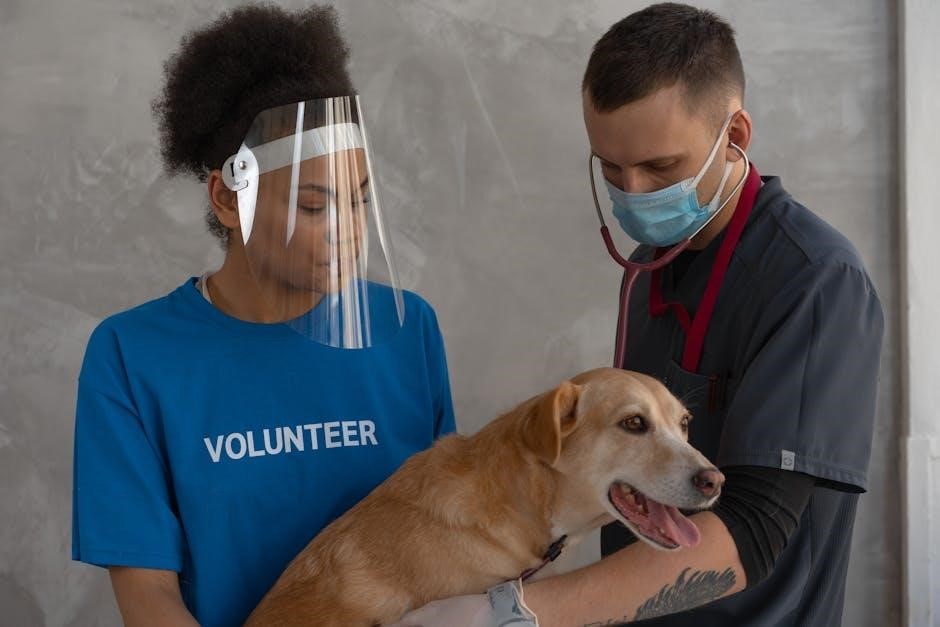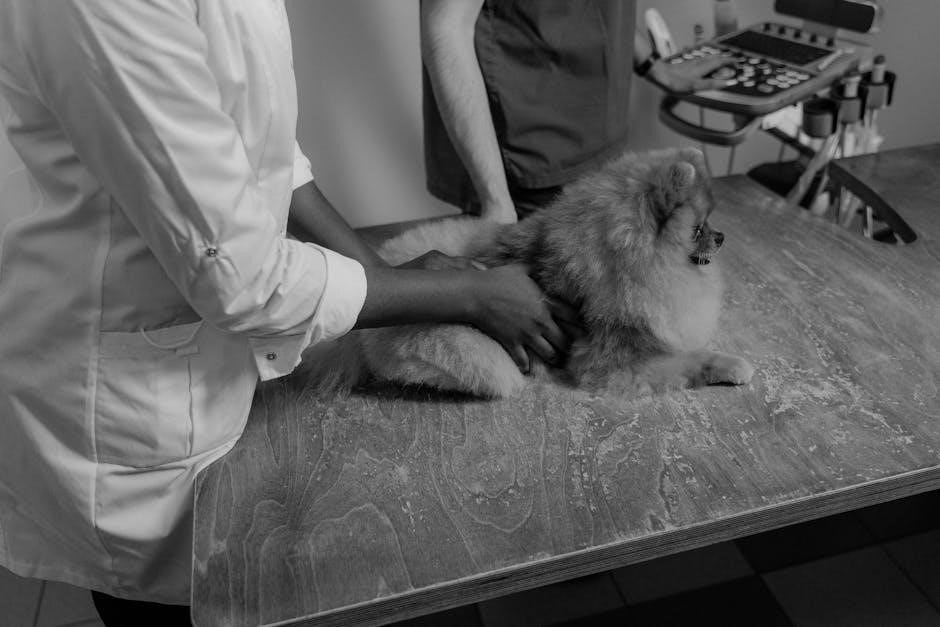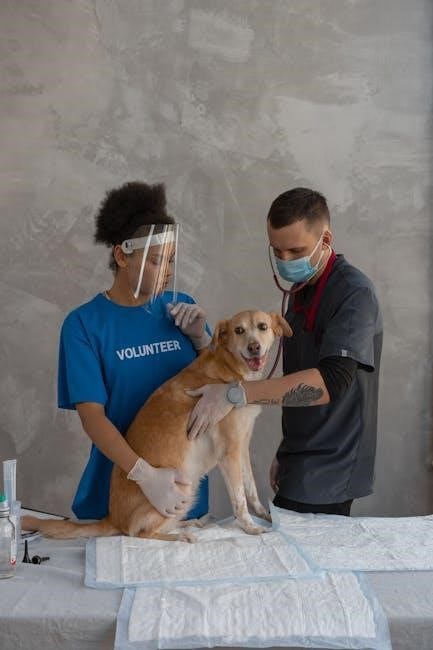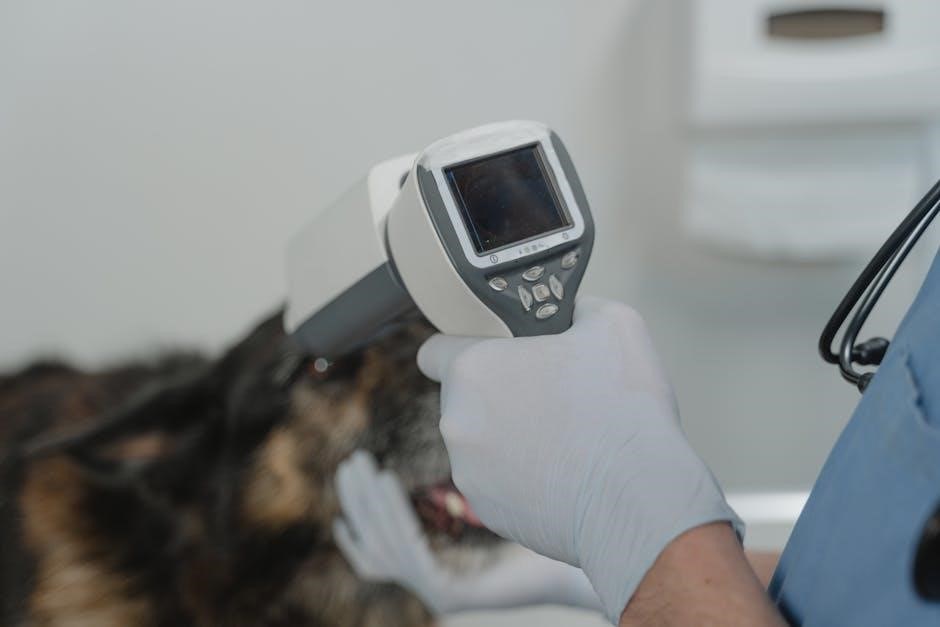An illustrated guide to veterinary medical terminology provides
a comprehensive introduction to veterinary medical terminology using
systematic approaches
to learning medical terms.
Importance of Medical Terminology in Veterinary Field
Medical terminology is essential to basic understanding in the veterinary field, as it enables effective communication between veterinary professionals, clients, and coworkers. An illustrated guide to veterinary medical terminology helps veterinary students and assistants learn and understand medical terms, which is crucial for providing quality care to animals. The veterinary field has a vast amount of unique terms, and learning these terms is important for attending veterinary assistant school. Understanding medical terminology is not just necessary for passing a course, but it is also used every day in practice when speaking with clients and coworkers, and when writing in patient files. Using an illustrated guide to veterinary medical terminology can help veterinary professionals develop a strong foundation in medical terminology, which is critical for success in the veterinary field. This foundation is necessary for providing quality care to animals and for communicating effectively with clients and coworkers. By learning medical terminology, veterinary professionals can improve their overall performance and provide better care to animals. Effective communication is critical in the veterinary field, and medical terminology is a key component of this communication.
Learning Medical Terms for Veterinary Students and Assistants
An illustrated guide to veterinary medical terminology provides a systematic approach to learning medical terms, which is essential for veterinary students and assistants. This guide offers a comprehensive introduction to veterinary medical terminology, including phonetic spelling and meanings of prefixes, suffixes, and roots. The guide is designed to be user-friendly, with easy-to-understand explanations of medical terminology and helpful learning features such as tips, case studies, and review questions; By using an illustrated guide, veterinary students and assistants can develop a strong foundation in medical terminology, which is critical for success in the veterinary field. The guide also provides an engaging pedagogical approach to learning medical terms, making it easier for students to understand and retain the information. Additionally, the guide contains helpful learning features, such as illustrations and diagrams, to help students visualize and understand complex medical concepts. This approach to learning medical terminology can help veterinary students and assistants to gain a deeper understanding of veterinary medicine and to become more confident in their abilities. The guide is a valuable resource for anyone learning veterinary medical terminology.

Veterinary Anatomical Nomenclature
Veterinary anatomical nomenclature provides precise anatomic references
for veterinary medicine using systematic approaches always.
Anatomic References for Veterinary Medicine
Anatomic references for veterinary medicine are crucial for understanding veterinary medical terminology, as they provide a standardized language for describing animal anatomy.
These references are used to identify and describe the structure and organization of animal bodies, and are essential for veterinary students, assistants, and technicians.
An illustrated guide to veterinary medical terminology can provide comprehensive anatomic references, including detailed illustrations and descriptions of animal anatomy.
By using these references, veterinary professionals can develop a deeper understanding of veterinary medical terminology and improve their ability to communicate effectively with clients and colleagues.
Additionally, anatomic references can help veterinary professionals to better understand the relationships between different anatomical structures and to identify potential health problems in animals.
Overall, anatomic references are a critical component of veterinary medical terminology, and are essential for providing high-quality care to animals.
They are used in a variety of settings, including veterinary clinics, hospitals, and research institutions, and are an essential tool for any veterinary professional.
Understanding Veterinary Anatomical Terms
Understanding veterinary anatomical terms is essential for veterinary professionals to effectively communicate and provide quality care to animals.
An illustrated guide to veterinary medical terminology can help individuals understand these terms by providing detailed illustrations and descriptions of animal anatomy.
By learning the meanings of prefixes, suffixes, and roots, veterinary professionals can decipher unfamiliar terms and expand their vocabulary.
This knowledge is critical in a variety of settings, including veterinary clinics, hospitals, and research institutions.
Additionally, understanding veterinary anatomical terms can help professionals to better comprehend medical records, diagnostic reports, and treatment plans.
It can also facilitate communication with clients, colleagues, and other healthcare professionals, ensuring that animals receive the best possible care.
Overall, understanding veterinary anatomical terms is a fundamental aspect of veterinary medical terminology, and is essential for providing high-quality care to animals.
Veterinary professionals can benefit from using an illustrated guide to learn and understand these terms, and to stay up-to-date with the latest developments in the field.

Medical Terminology Resources
Medical terminology resources include workbooks and
study materials
for learning veterinary medical terms.
Illustrated Guides to Veterinary Medical Terminology
An illustrated guide to veterinary medical terminology is a valuable resource for veterinary students and professionals, providing a comprehensive introduction to veterinary medical terminology.
These guides use a systematic approach to learning medical terms, making it easier for students to understand and retain the information.
The illustrated guide includes a wide range of medical terms, from basic prefixes and suffixes to more complex terminology, and is designed to be user-friendly and easy to navigate.
With the help of an illustrated guide, veterinary students and professionals can gain a deeper understanding of veterinary medical terminology and improve their communication skills.
This is essential for effective communication with clients and colleagues, and for providing high-quality patient care.
Overall, an illustrated guide to veterinary medical terminology is an essential resource for anyone working in the veterinary field.
It provides a thorough and engaging introduction to veterinary medical terminology, and is a valuable tool for learning and reference.
The guide is also regularly updated to reflect changes in the field, ensuring that users have access to the most current and accurate information.
Workbooks and Study Materials for Veterinary Medical Terminology
Workbooks and study materials are essential tools for learning veterinary medical terminology, and can be used in conjunction with an illustrated guide to reinforce understanding.
These materials provide a range of interactive exercises and activities, such as quizzes, games, and flashcards, to help students learn and practice medical terms.
A workbook can help students to develop a deeper understanding of veterinary medical terminology, and to build their confidence in using medical terms correctly.
Study materials may also include case studies and scenarios, which can help students to see how medical terms are used in real-world situations.
By using a combination of workbooks, study materials, and an illustrated guide, students can gain a comprehensive understanding of veterinary medical terminology.
This can help them to succeed in their studies and in their future careers as veterinary professionals.
Effective study materials can make a significant difference in a student’s ability to learn and retain veterinary medical terminology.
They provide a structured approach to learning, and can help students to stay organized and focused.

Practical Application of Veterinary Medical Terminology
Applying veterinary medical terminology in daily practice using
an illustrated guide enhances communication with clients.
Using Medical Terms in Daily Veterinary Practice
Veterinary medical terminology is essential in daily practice
as it enables effective communication with clients and coworkers.
An illustrated guide to veterinary medical terminology
provides a comprehensive reference for learning and applying medical terms.
Veterinary professionals use medical terms to document patient
files, discuss cases, and provide care instructions.
Accurate use of medical terminology ensures clear communication
and prevents misunderstandings, which is critical in veterinary care.
By using an illustrated guide, veterinary professionals can
quickly learn and apply medical terms in their daily practice,
enhancing the quality of care and services provided to clients
and their animals, and ultimately improving patient outcomes.
Effective use of medical terminology is a critical component
of daily veterinary practice, and an illustrated guide is a valuable resource.
Effective Communication with Clients and Co-workers using Medical Terminology
Effective communication is crucial in veterinary care, and
medical terminology plays a vital role in facilitating clear exchange of information.
An illustrated guide to veterinary medical terminology
enables veterinary professionals to accurately convey complex medical concepts to clients and coworkers.
By using standardized medical terms, veterinary teams can
ensure consistency and clarity in their communication, reducing the risk of misinterpretation.
Clear communication also helps to build trust with clients, who
appreciate being well-informed about their animals’ health and care.
An illustrated guide to veterinary medical terminology provides

a valuable resource for veterinary professionals to enhance their communication skills, ultimately leading to better client satisfaction and outcomes.
Moreover, effective communication among veterinary team members
is critical for providing coordinated and high-quality patient care, and medical terminology is essential for achieving this goal.
